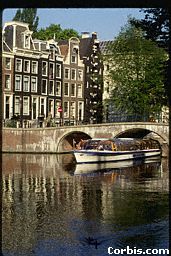| Group | Germanic (with English, German, Swedish etc.), West Germanic (with Frisian, Afrikaans etc.) |
| Geography | The Netherlands, several provinces of Belgium called Flanders (Ghent, Brabant, Antwerpen, Limburg). Also spoken in the former Dutch colonies in America (Surinam) and Asia (Indonesia). In Belgium the language is called Flemish, though it has preactically no difference from Dutch in the Netherlands. The total number of speakers equals to 21 million people. |
| History | The ancestor of Dutch was the West Low Frankish dialect of Germanic tribes. The Dutch language may be divided into three main periods-Old, Middle, and Modern Dutch. Old Dutch extends to about 1100. The only important extant monument of this period is a translation of the Psalter. Middle Dutch extends from 1100 to 1550, when the modern Dutch began to form. |
| Phonetics | Vowels can be short, semi-long and long, though long vowels are used only before r. Unlike German and English, Dutch g is a fricative sound [g]. Voiceless consonants p, t, k d not acquire an aspiration at the beginning of the word. Another interesting feature is an infixed vowel sound appearing between consonants: warm [warem] 'warm'. |
| Nominal Morphology | The history of Dutch is the history of constant simplification of morphology.
Today the noun in Dutch has two genders (common and neuter), while in Middle
Dutch there was also the feminine gender. The declension system was lost
in colloquial speech, though is still used sometimes in the book style
(the genitive case). The declension relations in the sentence are now expressed
by means of word order and prepositions.
There are two kinds of article - indefinite (een) and definite (common de, neuter het). The adjective can have short and full forms, the former used mainly in the predicate (hij is jong 'he is young'). |
| Verbal Morphology | The verb is conjugated in person, number, tense, voice and mood. Strong and weak verbs have significant differences, there are also several special verbs. There are only 3 personal endings, but still the conjugation is rather strict (maak, maakt, maakt, maken, maakt, maken 'to make'). The tenses include the Present, the Preterite (Past), the Perfect, the Plusquamperfect, the Future I-II, and the Future in the Past I-II. The Perfect is formed with the help of the verbs hebben 'to have' and zijn 'to be'. |
| Lexicon | The Dutch language has a long leterature tradition, and its lexicon remains quite rich. Moreover, it is quite pure, for Dutch did not borrow many words from other languages. The only language which influenced south dialects of Dutch was French - mainly in Belgium. |
| Writing | Latin alphabet |
| Close Contacts | Contacts took place mainly within the Germanic group of Indo-European languages. In the Middle Ages, its neighbours were Frankish, Old Saxon and Frisian languages, later German, French and English. The colonial history of Holland did not affect the language. |
| Sample | .
. |
| Picture |  |
| More info |